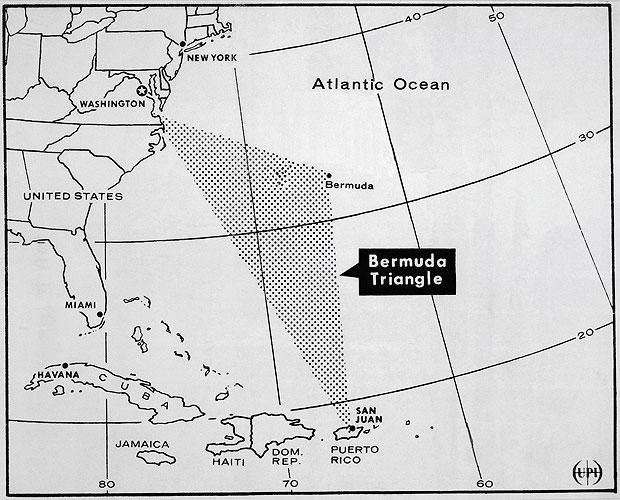The Mysterious Case of the Bermuda Triangle
Share




The Bermuda Triangle is an area in the Atlantic Ocean notorious for being the location of dozens of mysterious accidents and disappearances that many refused to dismiss as coincidental. In most cases, no wreckage was found, though some ships were discovered completely abandoned for no apparent reason. As mysterious as it would read, when you dig deeper, the case becomes less puzzling. You will find that some of the disappearances were never in the area to begin with, and many others have been rationally explained and ascribed to human errors or environmental effects.
The boundaries of the Bermuda Triangle are not universally agreed upon; it is roughly situated between the Southeastern Coast of the United States of America, Bermuda, and Puerto Rico. Many official institutions consider it an imaginary area; for instance, the United States Board on Geographic Names neither recognizes the Bermuda Triangle, nor maintains an official file on it. So, what fueled the Bermuda Triangle fever?
The name “Bermuda Triangle” was coined in 1963 by American author Vincent Gaddis in an article for Argosy Magazine; he claimed that supernatural dark forces are at work in the area. Gaddis’s article lacked scientific evidence and raised much speculation; however, it came out at a perfect timing, shortly after the loss of two US Air Force aircrafts. Later, Charles Berlitz’s The Bermuda Triangle (1974), which blamed the losses on aliens and survivors from the fictional lost civilization, Atlantis, became an international bestseller.
This does not necessarily deny the claims of odd experiences in the Bermuda Triangle; science has actually proved deviations from the norm in the area. The most recent was in October 2016, when a group of satellite meteorologists announced that an unusual type of clouds in the area stands behind the mysterious incidents. Dr. Randy Cerveny of Arizona State University said there are huge hexagonal-shaped clouds causing “air bombs” that hit the ocean and create massive waves. The resulting violent unexpected storms are so powerful that ships and airplanes can be plunged into the ocean instantly.
Other environmental causes include underwater earthquakes, as scientists found a great deal of seismic activity in the area. Moreover, the Triangle is located in the Gulf Stream Current, which is so powerful and swift that it can pose serious navigational challenges for inexperienced sailors. The Gulf Stream is fast enough to erase any evidence of disaster. Underwater topography may also be a factor; the Bermuda Triangle is home to some of the deepest trenches on Earth, making it almost impossible to find sinking ships or airplanes.

Another argument is that of methane gas hydrates. Scientists at Cardiff University discovered large concentrations of methane gas trapped in the ocean floor due to decomposing sea organisms. Ocean floor sediments contain a methane-producing bacteria; the methane accumulates and concentrates forming gas hydrates. If a methane pocket ruptures, the gas suddenly erupts, causing the water to be less dense; this would sink any ship in the area and sediments could quickly cover it as it settles onto the sea-floor.
Moreover, many pilots reported magnetic abnormalities in the area; in 1970, Bruce Gernon reported a strange cloud that spread out and formed a tunnel as he passed through it. His navigational instruments went haywire and the compass needle went counterclockwise; his airplane disappeared from the Miami Air Traffic Control radar, then was suddenly spotted as he passed the cloud. Surprisingly, there was a time gap of around 30 minutes of his flight confirmed by his watch and the airplane’s clock, which led him to believe the fog had time travel qualities. No clear cut scientific explanation has deciphered this phenomenon.
Another very popular explanation that entailed human error was that pilots and sailors fail to account for the agonic line passing through the area, which causes significant navigational errors and catastrophes. The agonic line is where true north and magnetic north are in perfect alignment; hence, there is no magnetic declination and no need to compensate for magnetic compass variation. However, this theory is no more valid since scientists proved the agonic line is drifting westwards with an average velocity of about 0.2 degrees yearly. It once passed through the Bermuda Triangle; yet, it now falls within the Gulf of Mexico.
Time after time, science would prove it has the final say in every fact-versus-myth battle. Breathtaking tales and headlines can be tempting or even appealing; legends will keep finding their way into human minds, but science will remain our defense mechanism against them.
References
adventure.howstuffworks.com
britannica.com
independent.co.uk
telegraph.co.uk
*The original article was published in SCIplanet, Earth Sciences (Spring 2017) Issue.